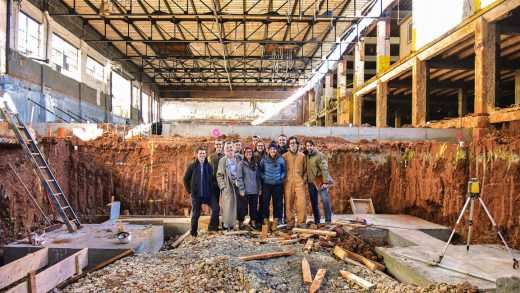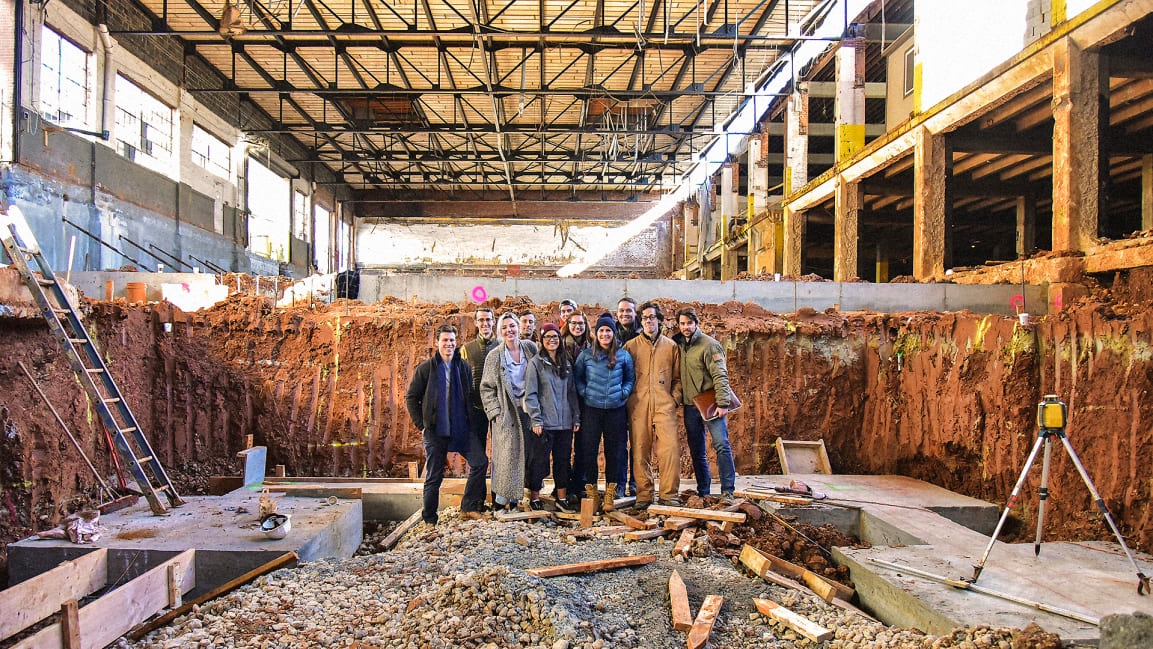Why this coffee shop turned its baristas into construction workers during COVID-19
Inside a new and nearly finished coffee roasting facility in Washington D.C., Joel Shetterly is animatedly leading a video tour through the building. As head of design for Compass Coffee, a seven-year-old company with 13 cafe locations and tinned beans in stores across the D.C. region, Shetterly is eager to show off the 65,000 square foot building’s new roasters, packaging equipment, and lots of welded steel.
He’s excited about how the largely automated new space works, and also excited about how it can help the small coffee chain expand to new locations and retail opportunities. But mostly he’s excited about who made it all possible. “We have motors hanging from the ceiling, pipes crossing through one another and dropping through the floor to the level below,” Shetterly says, panning across the room. “This was all installed by baristas.”
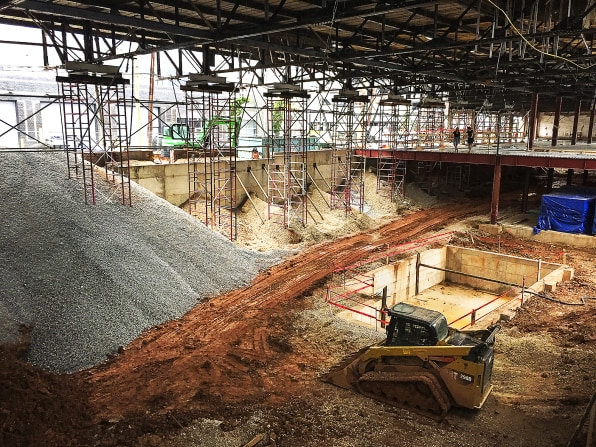
The multi-million dollar roasting facility, unlike probably any other, was largely built by employees of Compass Coffee’s cafes.
“We realized at the start of COVID it was going to be very bad for the cafes. Our business was down 90%,” Shetterly says. About 80% of employees were laid off in early March. “Rather than laying everybody off, we said for people who wanted to come learn construction and equipment installation and rigging, that they could come to the facility and we would put everyone to work.”
About 20 cafe workers agreed. Because it was a renovation of a former tomato cannery, most of the structural work on the building was already completed, but much of the interior was an empty space. Shetterly, who has led the construction management on all of Compass Coffee’s cafes, became a kind of teacher-slash-foreman, showing cafe managers, espresso techs, and delivery drivers how to weld, guiding them in installing wiring, and helping get all the facility’s new equipment in place. Instead of pulling espresso shots and foaming milk for lattes, they were driving scissor lifts and framing walls. “Literally none of this was in here a year ago,” Shetterly says, walking through the facility. “This is entirely the product of work put in by our team during COVID.”
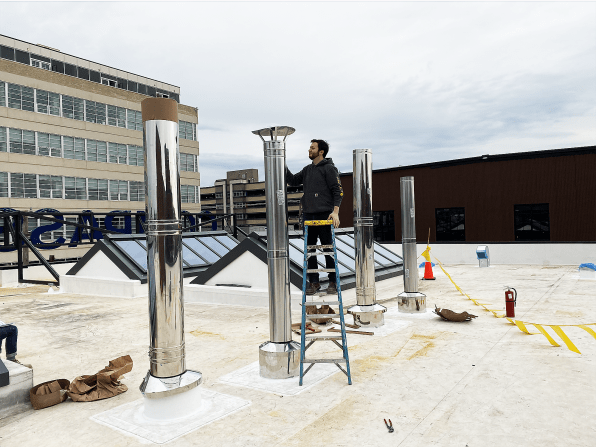
After some basic training, the unconventional construction crew started building. Shetterly says he brought the team in every morning and walked them through a digital model of the project, showing which parts of the building they’d be working on that day. The model, made using technology from Autodesk, “is the only way it was possible to build this incredibly complex factory using people who had never worked in construction before,” Shetterly says. “There’s no doubt that it required a ton of oversight, and really good coordination.”
Nicolas Mangon, a vice president at Autodesk, says that during the pandemic, the company’s digital design tools were being used by a lot of people who were new to construction and trying to adjust their physical spaces to accommodate new distancing and safety requirements. “We saw a lot of companies use similar technology to reconfigure spaces, to organize restaurants, to organize stores and facilitate how people were moving through,” he says. It’s not unheard of for non-designers to use these kinds of design tools, he says. The U.S. Navy Seals reportedly used Autodesk modeling tools to plan out the raid that killed Osama Bin Laden.
The stakes were somewhat lower for Compass Coffee’s project, but not completely risk-free. The company wouldn’t disclose how much it spent on the project, but has characterized it as a make-or-break investment for a growing business trying to survive the pandemic. “We had to finish this. We couldn’t not work on this for a year,” Shetterly says. Trusting inexperienced baristas, and investing in their training as construction workers, was worth the risk.
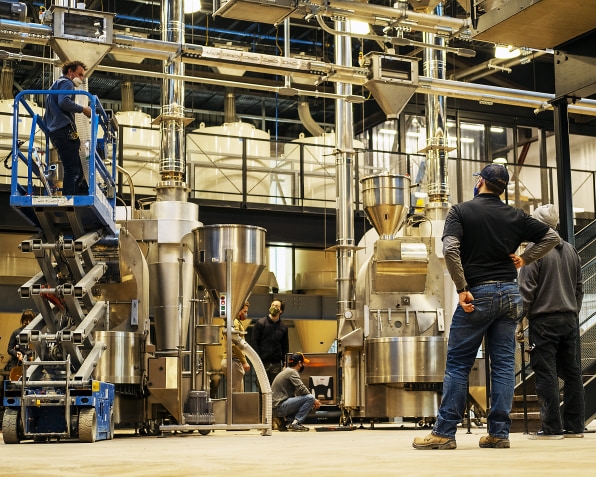
That doesn’t mean it all went smoothly. Shetterly says the construction and installation was slow, and certain things like bending sheet metal for ductwork proved too complicated. “There’s no question that it took longer than it would have if we’d thrown millions of dollars at a general contractor with a specialized equipment installer. But at the end of the day we’re a really small company. We don’t have a tremendous amount of cash. Building something like this is really expensive,” he says.
To help the company survive, every employee from bottom to top took a pay cut to $15 an hour right at the start of the pandemic. Shetterly says pay was gradually increased and is now back at pre-pandemic levels. All but three of the company’s cafes are now open, and the company is hiring.
Now that the facility is nearly complete and cafes are reopening, will all the baristas moonlighting as builders ditch their hardhats and get behind the bar? Shetterly says Compass Coffee does all of its cafe construction and furniture making in house, so as long as the company keeps growing, the new skills people picked up can be put to use. “For people who want to stay on board, we’re going to be able to find opportunities for them to continue working in fabrication and construction,” he says.
(10)

